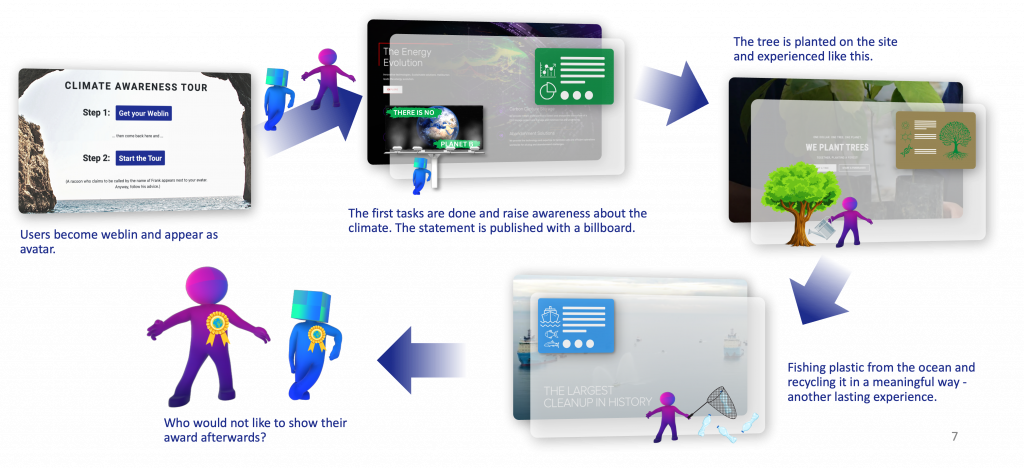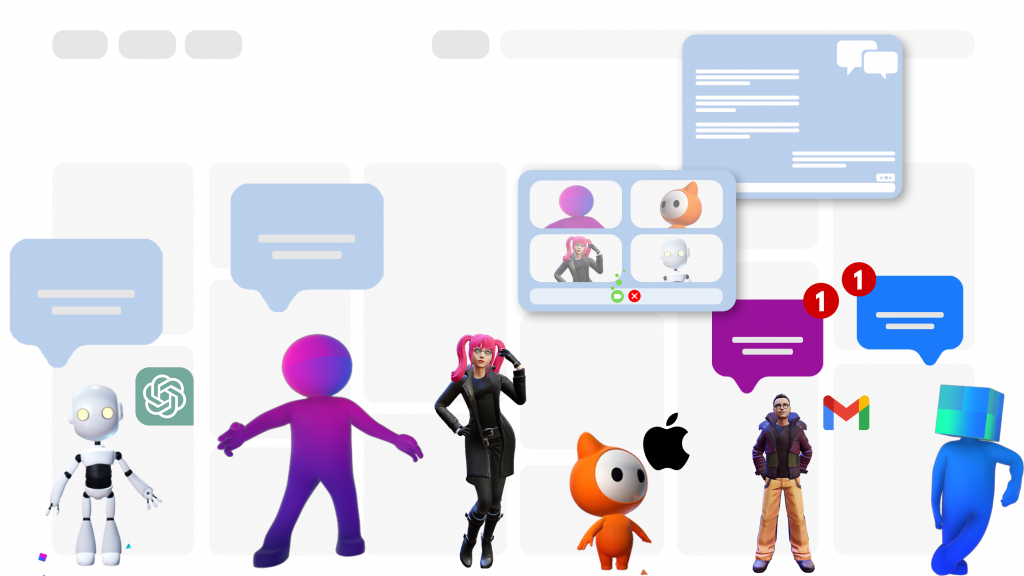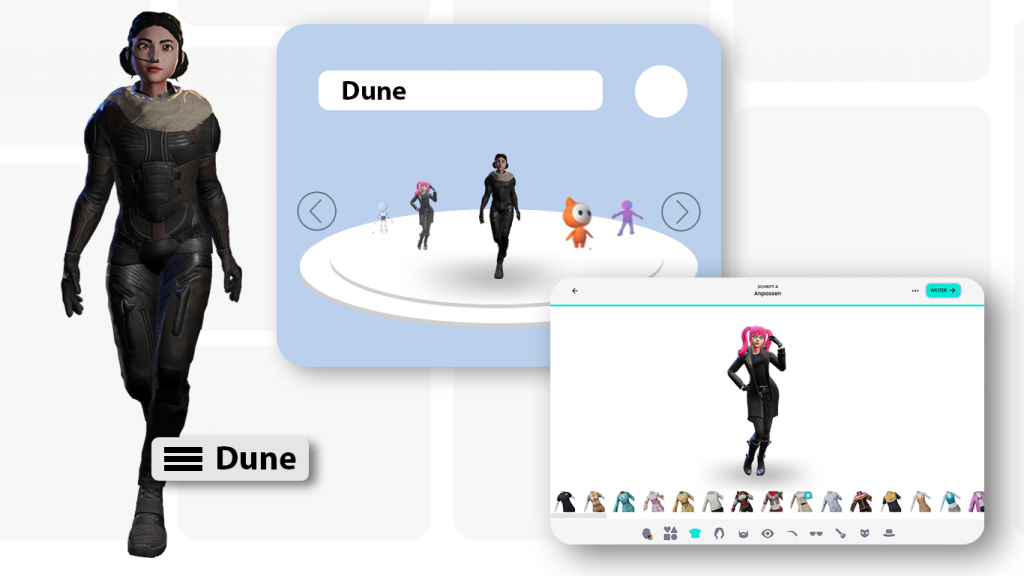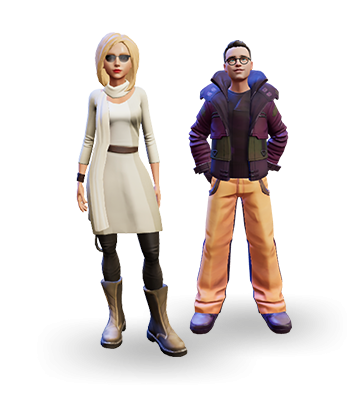The metaverse has long been seen as a futuristic playground, promising a digital utopia of interconnected virtual worlds. As we approach 2025, the vision is rapidly evolving, thanks to breakthroughs in technology and innovative platforms like Weblin.io. What are metaverse trends? What’s driving this change, and how is Weblin turning the existing web into a vibrant, accessible metaverse? Let’s dive into the trends reshaping the digital frontier.
1. The Rise of Web AR and Cross-Platform Integration
Gone are the days of clunky app installations. Web AR is democratizing augmented reality (AR) by enabling users to access immersive experiences directly through their browsers. This approach eliminates the barriers of expensive hardware, lengthy app downloads, and platform-specific restrictions. Instead, AR becomes as easy as clicking a link.
Weblin is at the forefront of this trend, transforming the web itself into a metaverse. With Weblin, users don’t need specialized devices like AR glasses or VR headsets. The platform allows avatars to appear directly on any website, enabling interactions with other users in real time. Whether it’s sharing a laugh, exchanging virtual goods, or exploring together, Weblin shows how cross-platform AR can create a sense of presence and connectivity across the web.
This seamless approach not only expands AR’s accessibility but also lays the foundation for a unified, open metaverse where users are free to explore and interact without limitations.
2. Blockchain-Powered Digital Economies
The metaverse thrives on ownership, and blockchain technology is the engine behind this evolution. By enabling secure, decentralized ownership of digital assets like virtual real estate, collectibles, and currencies, blockchain has transformed the way people think about value in virtual spaces.
Weblin enhances this ecosystem by integrating blockchain-supported items directly into its avatars. These avatars can carry NFTs and other digital assets in their backpacks, seamlessly blending the worlds of browsing and blockchain. Imagine stumbling upon a rare collectible while exploring a website, storing it in your Weblin backpack, and later trading it with other users across the metaverse.
This creates a new era of virtual commerce where digital ownership isn’t just about gaming or collectibles but extends into retail, art, and even professional credentials. Blockchain-powered economies will be at the heart of the metaverse by 2025, and Weblin is making them accessible to everyone.
3. Virtual Avatars: Beyond Representation
Avatars have come a long way from being static digital representations. They are now dynamic, interactive, and customizable entities that serve as bridges between the physical and virtual worlds. Platforms like Weblin have revolutionized how avatars are used, turning them into powerful tools for interaction and creativity.
With Weblin, creating an avatar is simple and deeply personal. Users can design unique characters through the integrated ReadyPlayerMe avatar generator or select from pre-designed options. Avatars aren’t limited to just looking good—they are fully functional entities capable of chatting, starting video calls, and even participating in gamified experiences across websites.
Metaverse Trends 2025: Virtual Avatars but deeply personal
Beyond individual use, avatars have become essential for brands, events, and online communities. They allow businesses to create branded avatars for users to wear, fostering a sense of community and loyalty. By 2025, avatars won’t just represent us—they’ll act as our digital partners in every corner of the web.
4. Hypercasual Gaming for Engagement
Gaming isn’t just for entertainment anymore—it’s a key driver of engagement across industries. Hypercasual gaming, characterized by quick, low-effort experiences, is becoming a powerful tool for education, marketing, and community building. Weblin is taking this concept to the next level by integrating games directly into its metaverse experience.
Imagine exploring websites as a Weblin avatar, where you can uncover hidden treasures, solve puzzles, or embark on themed quests. One example is the Climate Awareness Tour, where users can learn about sustainability by collecting virtual plastics and recycling them to earn badges. These games are not only fun but also serve to educate and inspire action.
For brands, hypercasual gaming offers a unique way to connect with audiences. Instead of passive ad consumption, users actively engage with content through playful, memorable interactions. By 2025, gamification will be an essential strategy for anyone looking to stand out in the crowded digital landscape.
More about hypercasual gaming with weblin.io: Read More
5. Breaking Barriers with Open Metaverse Platforms
The dream of the metaverse is one of seamless exploration and connectivity. Yet, today’s virtual spaces often fall short, burdened by walled gardens, expensive hardware, and fragmented ecosystems. Weblin is changing the narrative by leveraging the existing web as the metaverse’s foundation.
Unlike platforms that require VR headsets or exclusive memberships, Weblin is accessible to anyone with a browser. This approach aligns with the vision of an open, inclusive metaverse, where users aren’t locked into specific ecosystems. Avatars can roam freely across websites, interacting with diverse communities and content without barriers.
As technology advances, Weblin’s model of using the web as the metaverse will likely set the standard for accessibility and inclusivity. By removing high-cost entry points, Weblin ensures that the metaverse isn’t just a playground for the few but a vibrant space for everyone.
6. The Corporate Metaverse
The way we work is changing, and the metaverse is playing a central role in redefining productivity and collaboration. Virtual workspaces are no longer limited to video calls—they are becoming immersive environments where employees can interact as avatars in dynamic, engaging ways.
Weblin’s browser-based approach makes this shift seamless for businesses. Instead of requiring employees to learn complex systems or invest in new hardware, companies can use Weblin to host lively events directly on their websites. Imagine a virtual conference where attendees can chat, network, and even play games as their avatars—all within the familiarity of a browser window.
By 2025, the corporate metaverse will be a cornerstone of remote work, fostering creativity, engagement, and community in ways traditional tools simply can’t match.
7. Attention Economy Meets Gamified Web Tours
Capturing and maintaining attention is a growing challenge in today’s digital landscape. Weblin addresses this with its innovative engagement tours, which guide users across curated websites while offering a mix of tasks, storytelling, and rewards.
For example, a sustainable fashion brand could create a Weblin tour that takes users through sites showcasing the environmental impact of fast fashion, culminating in a reward like a discount code or exclusive badge. This gamified journey transforms fleeting interactions into meaningful, memorable experiences.
As attention spans continue to shrink, gamified web tours will become a vital tool for brands, educators, and creators. Weblin’s ability to make these tours interactive and avatar-driven gives it a distinct edge in the attention economy of 2025.

Conclusion
What are metaverse trends 2025? The metaverse’s future isn’t just VR headsets and isolated 3D worlds—it’s the web itself, brought to life by platforms like Weblin.io. By turning the web into a playground of avatars, games, and interactions, Weblin exemplifies a trend that will dominate 2025: using the web as the metaverse.
Ready to see the metaverse come alive? Install Weblin today and turn the internet into your digital playground!
What do you think? Is Weblin the game-changer the metaverse needs? Share your thoughts below!





